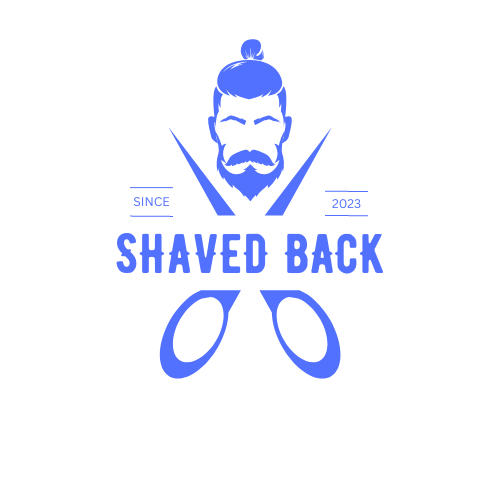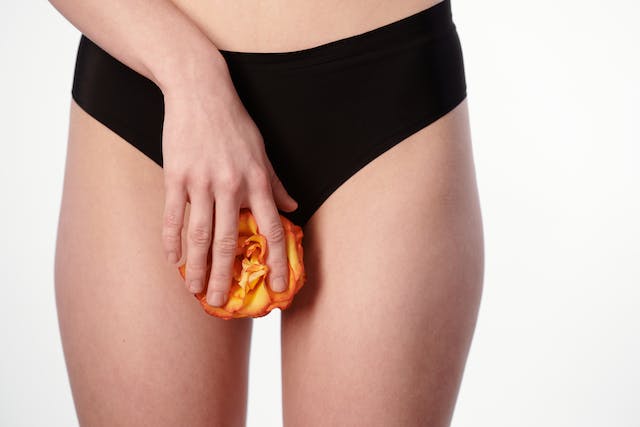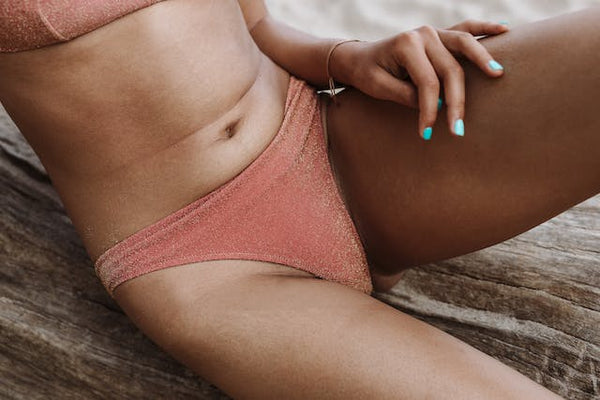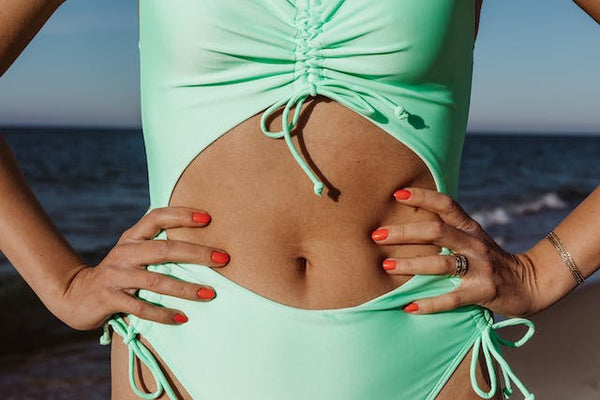Step into the realm of sheer elegance as we unveil the ultimate guide to achieving a luxuriously smooth pubic area without the fuss of waxing. Get ready to discover a curated selection of methods that redefine grooming, promising not just silkiness but an empowering experience tailored to your unique style.
Ever pondered the allure of a hair-free intimate area? Join us on a journey where personal choice meets self-expression, navigating through cultural nuances and individual preferences. Bid farewell to the waxing debate, and dive into a world where six alternative methods offer a canvas for self-care and confidence. Smoothness isn't just a state; it's a statement – let's embark on this odyssey to redefine your grooming ritual with sophistication and flair!
Table of Contents:
- Pubic Hair Removal: Is it Necessary?
- Why Should You Not Wax Your Pubic Hair?
- 6 Methods for Getting A Smooth Pubic Area Without Waxing
- Post Hair-Removal Care
- FAQs
Pubic Hair Removal: Is it Necessary?
The decision to remove pubic hair is a personal choice and varies among individuals based on cultural, aesthetic, religious, or personal preferences. There is no medical necessity for pubic hair removal, and the practice is not inherently harmful. However, there are some factors to consider:
Hygiene:
- Some argue that removing pubic hair may contribute to better hygiene by reducing the risk of bacterial and fungal infections. However, proper hygiene practices, such as regular washing, can also address these concerns without the need for hair removal.
Aesthetics and Cultural Preferences:
- Societal and cultural norms, as well as personal aesthetic preferences, can influence the decision to remove pubic hair. Some individuals feel more comfortable or find it aesthetically pleasing to have groomed or hair-free genital areas.
Comfort during Intercourse:
- Some people prefer the feeling of smooth skin during sexual activity, while others may not find it significant. Preferences in this regard vary widely among individuals and couples.
Personal Comfort:
- The decision to remove pubic hair ultimately depends on an individual's comfort level and personal choices. Some people may choose to remove or trim pubic hair for comfort, while others may feel more at ease with natural hair growth.
Why Should You Not Wax Your Pubic Hair?
Waxing has long been a popular choice for achieving a smooth pubic area, but it's not always the ideal method for everyone. This section sheds light on the reasons why you might want to reconsider waxing for pubic hair removal.
Pain Concerns:
- Waxing involves pulling hair from the roots, which can be uncomfortable and, for some, quite painful. If you have a low pain threshold or sensitive skin, this method may not be the most suitable.
Skin Sensitivity:
- The delicate skin in the pubic area is prone to irritation, redness, and ingrown hairs after waxing. For those with sensitive skin, these potential side effects can be a significant drawback.
Risk of Burns or Bruising:
- Improper waxing techniques or using products at the wrong temperature can lead to burns or bruising. The risk of these issues might make waxing less appealing for individuals seeking a gentler hair removal method.
Regrowth Time:
- Unlike some alternative methods, waxing requires a certain amount of regrowth before the next session. This waiting period might not align with everyone's preferred maintenance schedule.
DIY Challenges:
- Attempting at-home waxing may not yield professional results and could lead to uneven hair removal or, worse, skin damage.
6 Methods for Getting A Smooth Pubic Area Without Waxing
Explore a world of smoothness with these six effective methods for achieving a velvety pubic area without the need for waxing:
Shaving:
- Shaving is a common and relatively easy method. Use a sharp razor and a moisturizing shaving cream or gel to reduce irritation. Shave in the direction of hair growth to minimize irritation and ingrown hairs.
Advantages:
- Quick and easy to do at home.
- Inexpensive; razors are widely available.
- No waiting time for regrowth between sessions.
Disadvantages:
- Short-lived smoothness; regrowth is rapid.
- Potential for razor bumps, irritation, or cuts if not done carefully.
Trimming:
- If you prefer to keep some hair but want a neater look, use a trimmer with a guard to trim the hair to your desired length. This method is quick and less likely to cause irritation compared to shaving.
Advantages:
- Maintains a groomed look without complete hair removal.
- Less risk of irritation compared to shaving.
- Suitable for those who prefer a tidy appearance without complete smoothness.
Disadvantages:
- Not entirely hair-free; regrowth is noticeable.
- Regular maintenance is required for consistent results.
Hair Removal Creams (Depilatory Creams):
- Depilatory creams break down the protein structure of the hair, making it easy to wipe or wash away. Follow the product instructions carefully, and perform a patch test to ensure you're not sensitive to the cream.
Advantages:
- Quick and painless application.
- Suitable for larger areas.
- Hair regrowth tends to be softer than after shaving.
Disadvantages:
- Some individuals may experience skin sensitivity or reactions.
- Chemical odor associated with certain products.
- Results may not last as long as with some other methods.
Laser Hair Removal:
- Laser hair removal is a semi-permanent to permanent solution that uses laser light to target and damage hair follicles. This method usually requires multiple sessions but can result in long-lasting smoothness.
Advantages:
- Semi-permanent results, reducing long-term maintenance.
- Precision in targeting hair follicles.
- Suitable for various skin tones and hair colors.
Disadvantages:
- Initial cost can be high.
- Multiple sessions required for optimal results.
- Potential for temporary redness or sensitivity post-treatment.
Epilating:
- Epilators are devices that mechanically grasp and pull out hair from the roots. While this method can be more painful than others, it offers longer-lasting results. Make sure to exfoliate before epilating to reduce the risk of ingrown hairs.
Advantages:
- Longer intervals between sessions compared to shaving.
- May result in finer regrowth over time.
- Can be done at home with various devices.
Disadvantages:
- Initial discomfort during the process.
- Potential for ingrown hairs.
- Requires some regrowth before the next session.
Sugaring:
- Similar to waxing but uses a paste made of sugar, lemon, and water.
- Provides a natural alternative with minimal risk of irritation.
Advantages:
- Natural ingredients with minimal risk of irritation.
- DIY options available.
- Environmentally friendly.
- Potential for reduced hair regrowth over time.
Disadvantages:
- Can be messy and time-consuming.
- Skill and technique are essential for effective results.
- May not be as widely available as other methods.
Post Hair-Removal Care
Once you've achieved a beautifully smooth pubic area using one of the methods mentioned earlier, it's crucial to prioritize post-hair removal care to maintain skin health and prevent potential issues. Here's a comprehensive guide to effective post-hair removal care:
Hygiene is Key:
- Gently cleanse the treated area with a mild, fragrance-free soap to remove any leftover product or residue. Avoid harsh or scented soaps that may cause irritation.
Moisturize Liberally:
- Apply a soothing and moisturizing cream or lotion to the treated area. Opt for products containing aloe vera or chamomile to calm the skin. Moisturizing helps prevent dryness and reduces the risk of ingrown hairs.
Exfoliate Regularly:
- Incorporate regular exfoliation into your routine, starting a few days after hair removal. This helps prevent ingrown hairs by removing dead skin cells that could block hair follicles.
Avoid Tight Clothing:
- Opt for loose-fitting, breathable clothing to prevent friction and irritation. Tight clothing can exacerbate sensitivity and increase the risk of ingrown hairs.
Skip Intense Activities:
- Steer clear of vigorous physical activities, hot baths, saunas, or sun exposure for at least 24 hours post-hair removal. This allows the skin to recover without unnecessary stress.
Stay Hydrated:
- Drink plenty of water to maintain skin hydration from within. Hydrated skin is more resilient and less prone to irritation.
No Touching or Scratching:
- Resist the urge to touch or scratch the treated area, as this can introduce bacteria and lead to irritation or infection.
Avoid Harsh Chemicals:
- Refrain from using harsh chemical products, such as perfumes or dyes, on the treated area. Stick to gentle, hypoallergenic products to minimize the risk of irritation.
Sun Protection:
- If you plan to be outdoors, apply a broad-spectrum sunscreen with at least SPF 30 to the treated area to protect it from harmful UV rays.
Monitor for Signs of Irritation:
- Keep an eye out for any signs of redness, inflammation, or unusual discomfort. If you notice any concerning symptoms, consult a dermatologist.
FAQs
Q1: Is it necessary to remove pubic hair, or is it a personal choice?
A: Pubic hair removal is a personal choice. Cultural, aesthetic, and individual preferences play a significant role in the decision. Our guide explores the various reasons people choose to groom or embrace natural growth.
Q2: How often should I shave or trim my pubic area?
A: The frequency depends on personal preference and the chosen method. Shaving may require more frequent maintenance, while trimming can be done as needed. Find a schedule that suits your comfort and desired level of smoothness.
Q3: Are hair removal creams safe for the pubic area?
A: Hair removal creams are generally safe if used according to instructions. However, perform a patch test first to check for any adverse reactions. Avoid leaving the cream on for longer than recommended to prevent skin irritation.
Q4: Does epilating hurt, and how long do the results last?
A: Epilating may cause initial discomfort, but pain tolerance varies. Results typically last longer than shaving as hair is removed from the root. Regular use can lead to reduced regrowth over time.
Q5: Can I sugar at home, and how effective is it?
A: Yes, sugaring can be done at home with DIY recipes. Effectiveness depends on technique and skill. While it may be messier than other methods, sugaring offers a natural and potentially longer-lasting alternative.
Q6: Is laser hair removal permanent, and does it work for everyone?
A: Laser hair removal provides semi-permanent reduction. Multiple sessions are usually required. It may not be suitable for all skin and hair types, and individual responses vary.
Q7: How can I prevent ingrown hairs after hair removal?
A: Regular exfoliation, moisturizing, and avoiding tight clothing can help prevent ingrown hairs. Be gentle with the skin and follow post-hair removal care practices detailed in our guide.
Q8: What if I experience irritation or redness after hair removal?
A: Mild redness is common but should subside. If irritation persists or worsens, consult with a dermatologist. Avoid scratching or using harsh products and follow our post-hair removal care recommendations.
Q9: Can I combine different hair removal methods?
A: Combining methods is a personal choice but may increase the risk of irritation. Ensure you follow proper aftercare for each method to maintain skin health.
Q10: How do I choose the best method for my preferences and skin type?
A: Consider factors like pain tolerance, desired smoothness, and potential skin sensitivities. Our guide provides detailed insights into each method to help you make an informed decision.
Conclusion
In the pursuit of a flawlessly smooth pubic area without the reliance on waxing, our comprehensive guide has illuminated a spectrum of choices tailored to your preferences and lifestyle. From exploring the necessity of pubic hair removal to understanding the drawbacks of waxing, we've embarked on a journey to redefine grooming on your terms.
The six methods detailed – shaving, trimming, hair removal creams, epilating, sugaring, and laser hair removal – offer a diverse palette for achieving the smoothness you desire. Each method comes with its own set of advantages and considerations, allowing you to choose the path that aligns seamlessly with your comfort and style.




